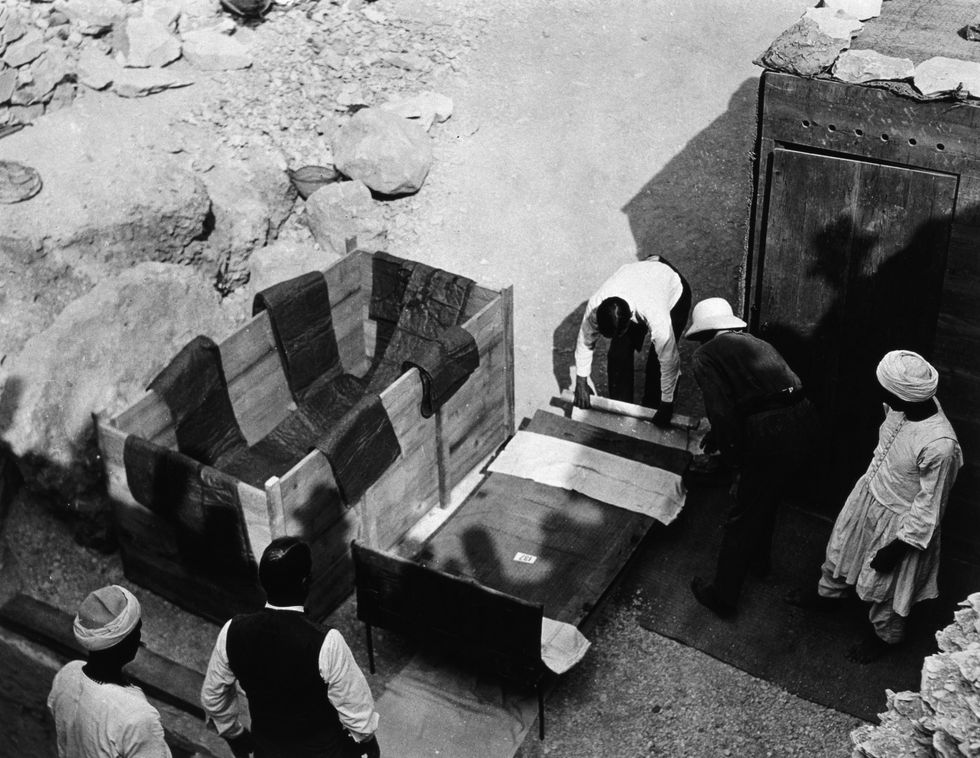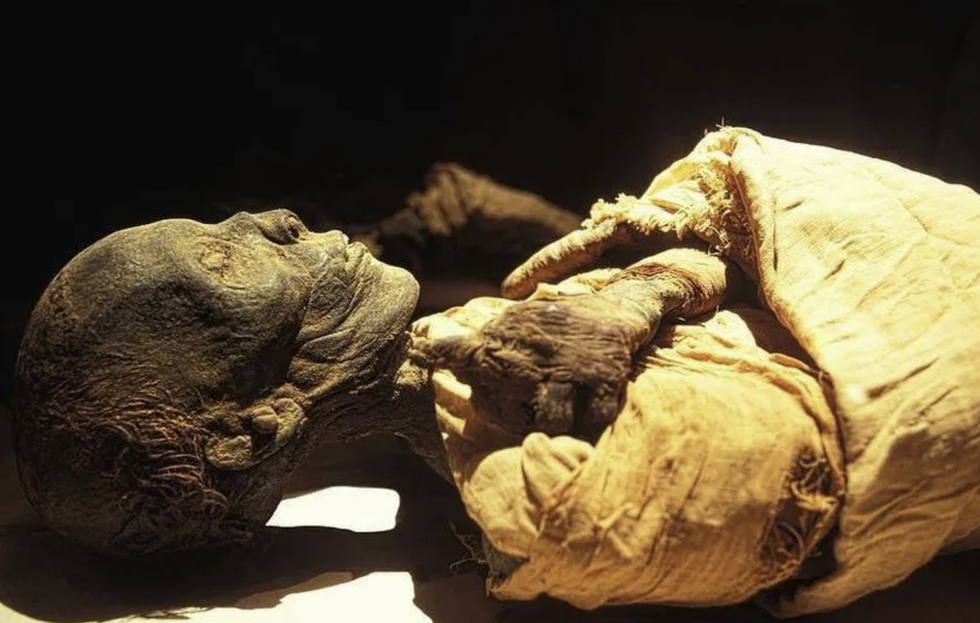Archaeology breakthrough: Tomb of 3,500-year-old Egyptian pharaoh uncovered in first major discovery since Tutankhamun
The tomb was found at Mount Thebes - just 1.4 miles away from where King Tutankhamun was found in 1922
Don't Miss
Most Read
Trending on GB News
Archaeologists have announced the discovery of Egypt's first royal tomb since King Tutankhamun's burial chamber was unearthed more than a century ago.
The ancient resting place of King Thutmose II - who ruled around 3,500 years ago has been uncovered in west Luxor's Valley of the Kings.
The tomb was found at Mount Thebes - approximately 1.4 miles from where Tutankhamun was discovered in 1922.
Secretary General of Egypt's Supreme Council of Antiquities Dr Mohamed Ismail Khaled described it as "one of the most important archaeological discoveries in recent years".

The tomb was found at Mount Thebes - approximately 1.4 miles from where Tutankhamun was discovered in 1922
GETTY
At first, archaeologists thought the tomb belonged to the wife of Thutmose's son due to its proximity to Queen Hatshepsut's burial site.
The entrance to the tomb and its main passage were first discovered in 2022, with continued excavations revealing crucial evidence of its royal occupant - recent research into inscriptions has confirmed the individual's identity.
"Fragments of vessels bore inscriptions identifying Thutmose II as the 'deceased king,' alongside the name of his wife, Hatshepsut," Khaled confirmed.
Notably, King Thutmose's mummy had been discovered in the 19th century not far from the tomb site and, since then, experts have suggested that the remains were likely relocated centuries after the tomb was looted.
LATEST DEVELOPMENTS:
The tomb was found in a poor state of preservation, having suffered damage from floods shortly after the king's death, which are believe to have caused pieces of mortar to fall from the interior walls.
The structure features a distinctive corridor with a floor covered in white plaster, leading to the burial chamber in the main corridor, where the floor level sits about five feet higher than the chamber floor itself.
Archaeologists discovered remnants of blue inscriptions and yellow sky stars decorating the tomb.
The excavation team also found decorations and paragraphs from the religious book 'IImydwat', which was traditionally placed in royal tombs.

The ancient resting place of King Thutmose II - who ruled around 3,500 years ago has been uncovered in west Luxor's Valley of the Kings
Egypt Museum
King Thutmose II was the fourth Pharaoh of the 18th Dynasty of Egypt, with his reign lasting either 13 years from 1493 to 1479 BC, or possibly just three years from 1482 to 1479 BC.
The pharaoh died at the age of 30.
While Thutmose II has been considered less prominent than other family members, he made his mark through military campaigns and is known for suppressing an uprising in Nubia and leading armies against rebels in the Levant.
His son, Thutmose III, earned the nickname "the Napoleon of Egypt" for his conquests.








